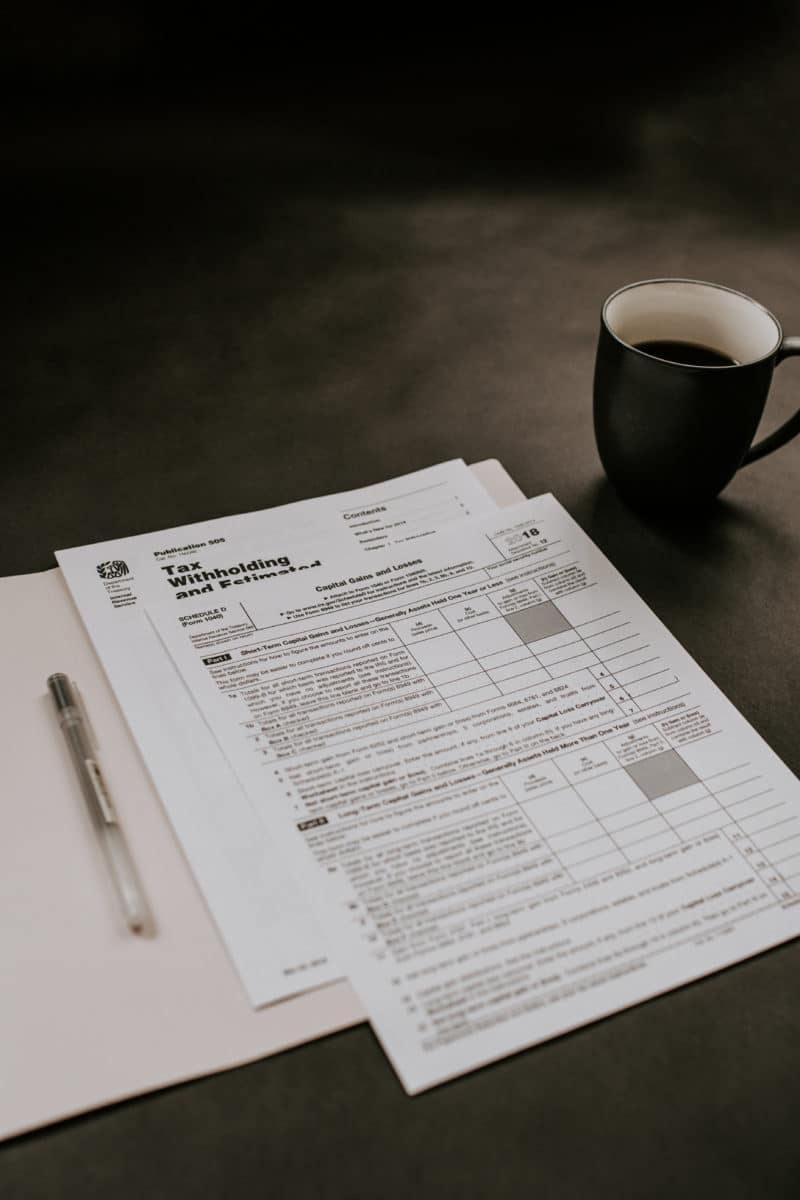Financial service providers are always on the lookout for ways to sharpen their segmentation – the right offer for the right customer at the right time, is the measure of all things. Companies that implement this successfully and consistently are usually the leading players in their markets. However, one of the foundations on which successful segmentation has often been judged may need an update. This is because more and more of the world’s leading financial institutions are taking steps to develop products and services that target about half the world’s adult population: Women.
But do you actually need special products that are tailored to the target group of women or do you actually lack the right integration and addressing of women, to get the fun out of and with finances?

To think about the sense and purpose of products for women at all, one thing is clear: women must be given an equal place in the financial industry, whether as developers, product owners or at executive – and board level. After all, who could better understand their own target group and bring the right tools with them than a woman?
Nevertheless, I believe that financial products, targeted campaigns and services for women can make sense if they help women to be introduced to and to manage finances more easily.
“I would do it if I only knew how?”
Women often earn less than men. On average 21 percent less, according to the statistics. Because we tend to work part-time because of the children, men dominate management positions, we work more in social jobs, which are traditionally less well paid. And often because we get less than men for the same work: 6 percent on average. Many women do not question their salary at all: they negotiate about it much less than men do.

US women are much more skeptical about the stock market than men. But why? When we invest, we want to have a good idea of how our savings will develop. In addition, there is the concern that our money could be lost at any moment on the stock market. But: if done right, stocks and the stock market are not as risky as many think.
Women tend to have less desire to follow the stock market than men. To make things worse, 1.1 billion women around the world currently have no access to formal financial services. On the other hand, however, 80% of global purchasing decisions are made by women.
Although some financial institutions remain skeptical that targeting women can even bring added value, it cannot be denied that this type of segmentation is in the air. And it will be difficult to ignore the growing number of new female players in the market.
Why is this happening now, after so many generations of gender-neutral product development and marketing? Because banks, credit card companies, asset managers and insurers are forced to listen as more and more women criticize the lack of services tailored to their lifestyle and financial circumstances. These women come from every age group and family structure and have financial resources from relatively modest incomes to large fortunes.
The first step in exploring the possibilities is to look closely at how women’s financial power is advancing.
Live the difference
What is so different about the needs of women’s financial services? Don’t women need the same basic products as men? The answer, of course, is yes. What is changing is that more women are becoming financial decision-makers and gaining financial clout due to a variety of factors, including the following:
“Don’t women need the same basic products as men? The answer is, of course: yes.”
- There are more women than ever before in the global labor force, in all age and income groups – more and more women who are initially married are becoming single parents, thus becoming the financial heads of their households.
- The percentage of female managers, business owners and entrepreneurs with significant fortune accumulation is rising steadily.
- More women inherit due to longevity and demographic patterns.
In fact, by 2030 it is estimated that two-thirds of total US wealth will be in the hands of women. The trends are similar in parts of Europe and the Asia-Pacific region: most strikingly, women are making it clear that they want to be treated differently from what they used to be in the traditionally male-dominated worlds of economics, finance and investment. They want a higher level of personalized service, enlightening (non-condensing) answers to financial questions and product attributes that address them thematically and emotionally.
Recent research shows that things associated with “self-care” for women – such as fashion, spa, souvenirs, cultural experiences and relationships with friends – are also given higher priority and thus influence women’s loyalty to financial institutions. Taking all these factors into account, what should financial services providers do to now offer products, services and tailored financial solutions so that many women say this is “right for me”?
Use of intuition
The key to the successful orientation of financial services for women lies both in the approach and delivery as well as in the actual product. Take the South Korean credit card company LG (acquired by Shinhan Financial Group). LG launched itsLady Card for a target group of young working women, offering several months of interest-free deferred payments at major retailers, discounts at restaurants and entertainment venues, and special services related to beauty treatments.

LG developed the card because it found that although the purchasing power of young Korean women was increasing rapidly, there was no bank card to match their lifestyle. The Lady card quickly became popular and is now used by nearly 25 percent of Korean women.
Middle and high-income women are targeted by many stakeholders, including Citigroup, whose Women & Co. division was created to “motivate and educate women on how to take control of their financial future”. For an annual membership fee, Women & Co. Access to financial education, including classes and seminars that focus on financial issues typically faced by women, and savings on selected products and services. Citigroup has used creative marketing campaigns effectively, with slogans such as: worries can be prevented, take care of your retirement plans, to attract women.
A recent study on women’s experiences and behavior in the financial sector states that although more than a third of married women surveyed say that they are the “chief financial officer” of their households, there are still many uncertainties and doubts as to whether they are on the right financial path. The company “Prudential Finance” has integrated the topic “Women & Finance” on its website, which divides women into several potential life phases: Single professional, single parent, growing family, alone, after divorce or loss, approaching retirement and life in retirement. The company demands and encourages women to take certain measures within a few days, which can also be quickly implemented to improve their financial situation.

In the UK, the Tescohas food chain benefited from loans and other financial services in the place where women spend at least a few hours a week: the supermarket. To ensure that they can maintain their desired lifestyle in old age and provide advice to help them achieve financial security. Other institutions have focused their efforts on a specific niche in the women’s market. Wellsfargo, for example, has made a public commitment to helping women start their own businesses. As part of its Women’s Business Services program, the bank has lent more than $26 billion to small female businesses since 1995, and it continues to increase its credit targets. Applications for loans under US$100,000 have been converted to a one-page form, with a decision often being made within a few days.
Another great opportunity for financial institutions lies in asset management for wealthy women – and some surprising players are leading this niche. The most traditional based in London private bank Coutts& Co. has launched an online magazine called Coutts Woman, which features profiles of wealthy women, advice on how to get into an MBA and make the most of your manpower after a long break, and exclusive spa and shopping opportunities. Another well-known British financial institution, Bramdean Asset Management, offers its Bramdiva-service, whose stated mission is “to protect and maximize women’s wealth”: Bramdean notes that in the UK more than 50 per cent of wealthy people are women; millionaires aged 18 to 44 are more than their male colleagues; and a variety of factors (such as business success, inheritance and divorce) have placed nearly 300 billion pounds of assets in the hands of British women’s wealth that requires professional management.
In the United States, the PNC Bank has created a Women’s financial services department dedicated to supporting “High Net Worth Women who become even more successful” by investing in the preservation and growth of wealth.
Financial institutions should be aware of research and data collection that shows that women are more likely to seek and rely on professional financial and investment advice than men, and are more likely to stay with the same advisor when good reports and comfort levels are developed – even if financial performance is uneven. Women also tend to be more risk-averse, ask more questions and admit that they have a lack of knowledge on this or that topic. It is obvious that those institutions that pay the greatest attention to the details of how women think about personal finances and investments are best positioned.
“Research shows that women are more likely to seek and rely on professional financial and investment advice than men.”
A better question might be whether they can’t afford to explore initiatives that target half the world’s population. Women in many markets are becoming increasingly loud when it comes to using financial services tailored to their needs and relatively few actors are listening. But many of those who have paid attention and responded appropriately are profitable – and have laid the groundwork for long-term relationships.
Banks, asset managers, insurers and other financial service providers should first ask themselves some basic questions:
- Do we understand the attractiveness of products and services for women and what drives this attractiveness (or lack the lack of it)?
- What efforts do we make in direct competition to attract female customers and do we keep pace with them?
- How well do we market our product range to women?
- Do we follow the demographic of female customers closely and try to identify the next product we need?
- How many women did we lose as customers last year and do we know why?
Of course, asking these questions is only a beginning. But dealing openly with women and finance, being educative, illuminating, planning new ways and responding meaningfully to demand could also be the beginning of something else: building a new lever for women to take things into their own hands, be brave and be emancipated with finance. The more products, campaigns and open speeches there are, the easier it becomes. The paradigm shift I would like to see in the financial services industry is that every single company recognizes the women’s market, including the low-income women’s market, for the incredible growth opportunities it offers.

If companies were to recognize this, they would act accordingly, i.e. they would do everything in their power to learn more about the customer segment woman and the sub-segments that it contains and to develop solutions that meet the needs of their customers.
The treatment of women as an independent customer segment is a first step. It starts with collecting and analyzing consumer data, conducting consumer research to understand the needs in a particular market of the specific segment of women, focus on that, and that offers opportunities for so much more.
It is a market opportunity for any Fintech company, and I believe that market driven solutions have enormous potential to integrate women into the financial system. And this is about two forms of integration. Women must be brought on board as developers and product people, as digital and solution oriented role models into the DNA of every company to create a diverse environment and benefit each other, participate, dispose common role models, encourage each other to strengthen each other and thus create the best products for each customer segment.
Don’t women need the same basic products as men? The answer, of course, is yes.
Research shows women are more likely to seek professional financial advice and rely on it than men.
